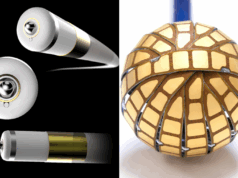
The National ICD Registry, a repository of implantable cardioverter defibrillator (ICD) implantation data developed through a partnership of the Heart Rhythm Society (HRS) and the American College of Cardiology Foundation (ACCF), released the National ICD Registry Report: Version 2.1. The new version expands upon the 2009 Annual Report to now include data on leads and paediatric implants to reflect recent advancements in healthcare.
This report is being published online in HeartRhythm.
Through collaboration with FDA, the Registry now incorporates lead data fields to track when leads are implanted, revised, removed or abandoned. More than 560,000 leads were entered into Version 2.1. In addition, for the first time, the Pediatric and Congenital Electrophysiology Society (PACES) worked with the Registry to account for paediatric implants and congenital heart disease diagnosis. Registry data now includes over 300 paediatric implants.
Analysis of the Registry demonstrates the degree to which real world ICD utilisation correlates with the randomised clinical trials that inform evidence based guidelines. Currently, the Registry accrues ICD implants at the rate of more than 12,500 per month. In the seven quarters of data collection, 263,284 ICD procedures were performed in more than 250,000 patients. In total, at the end of 2011, the ICD Registry accrued more than 850,000 ICD procedures.
“The ICD Registry serves as a valuable resource providing us with unique insights into clinical and procedural outcomes among the ICD patient population of the US,” said Anne M Gillis, president of the Heart Rhythm Society. “As the state of healthcare evolves, we will continue to encourage the Registry to incorporate and evaluate new data with the intention of using more comprehensive information to advance clinical practice and improve patient care.”
Key findings:
Since April 2010 through the end of 2011, the new version of the Registry gathered new data on ICD utilisation in the real world. Data highlights include:
- More than 260,000 procedures performed by over 4,300 clinicians at 1,428 institutions.
- Primary prevention device implantation in 73.8% of patients; secondary prevention indication in 22.5%.
- More than 560,000 leads entered into the database – 57.6% new and 42.4% previously implanted.
- More than half of the physicians recording implant procedures are EP Board Certified or completed an electrophysiology fellowship, accounting for 83% of all ICD implants.
Notable shifts since 2009 report:
Evaluation of the data since the previous ICD Registry was published shows key changes in the landscape of ICD implantation. Compared to 2009 data:
- Total number of procedures included in the Registry increased 6.4% which is partially related to the inclusion of “lead only” procedures which accounted for 62% of the additional monthly procedures.
- Less single and dual chamber ICDs and more cardiac resynchronisation devices (CRT) devices which is primarily a result of an increase in replacement devices growing from 25% to almost 40%.
The relevance of Registry data derives from its reach across almost all clinicians and institutions in the United States. The inclusion of new data, such as leads, paediatric procedures and congenital heart disease patients, will continue to be of importance in the future to ensure that the Registry remains applicable. Overall, the ability to influence and improve standards of care is contingent on the documentation, evaluation and interpretation of real-world data overtime.









